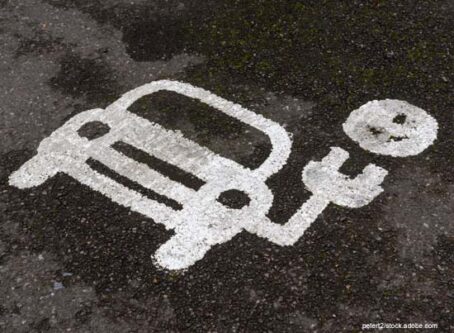Deciphering FMCSA’s Drug and Alcohol Clearinghouse
The world of trucking is filled with regulations. Maintaining compliance with those regulations can feel like a full-time job – on top of the driving, of course.
One regulation that seems to continually mystify drivers is the Federal Motor Carrier Safety Administration’s Drug and Alcohol Clearinghouse. Whether it is an issue with getting registered or simply understanding the function of the Clearinghouse, complying with this regulation can be confusing.
What is the Drug and Alcohol Clearinghouse?
According to FMCSA, the Clearinghouse is a “secure online database that gives employers, the Federal Motor Carrier Safety Administration, state driver licensing agencies, and state law enforcement personnel real-time information about commercial driver’s license and commercial learner’s permit holders’ drug and alcohol program violations.”
Simply put, the Clearinghouse is a way for various agencies to monitor truck drivers’ violations of the drug and alcohol program, such as positive drug or alcohol tests and test refusals. Additionally, it is also reported to the Clearinghouse when a driver completes the return-to-duty process following a violation or when previous violations are removed.
Carriers are required to run a Clearinghouse query on each prospective new driver. Furthermore, FMCSA requires an annual query on all company drivers every 12 months. When new information is added to a driver’s profile – be it positive or negative – employers are required to perform a “follow-on” query to determine whether or not the driver’s status has changed. This follow-on query will also satisfy the requirement for an annual query.
What gets reported?
There are a number of items that will get reported to the Clearinghouse. The first are drug testing results. FMCSA’s policy dictates that only results from U.S. Department of Transportation drug or alcohol tests, or refusals, can be reported. Any drug and alcohol testing conducted by employers that is outside the scope of the DOT testing requirements cannot be reported to the Clearinghouse.
Additionally, employers must report “actual knowledge” of a driver’s drug or alcohol violation. Federal code interprets actual knowledge as that “based on the employer’s direct observation of the employee, information provided by the driver’s previous employer(s), a traffic citation for driving a (commercial motor vehicle) while under the influence of alcohol or controlled substances, or an employee’s admission of alcohol or controlled substances use, except as provided in § 382.121.”
The code further defines “direct observation” as the “observation of alcohol or controlled substances use and does not include observation of employee behavior or physical characteristics sufficient to warrant reasonable suspicion testing.”
Lastly, any traffic citations for driving a commercial motor vehicle while under the influence of alcohol or controlled substances will immediately be reported by state law enforcement and the state DOT.
The Clearinghouse uses the information from your CDL to track and monitor all violations. Because of this, violations are reported and recorded even if a driver isn’t registered.
The Clearinghouse will notify drivers any time information is added, revised, or removed. This is done via mail or email, depending on your preference selected during the registration process. For drivers who are not yet registered for the Clearinghouse, these notifications will be sent by mail using the address on your CDL.
One group, the Trucking Alliance, has continually pushed FMCSA to include hair testing results as reportable to the Clearinghouse. The group’s most recent efforts to do this were denied by the agency in December, which said it lacked the authority to grant the group’s request.
The Owner-Operator Independent Drivers Association has been vocal regarding their opposition to the inclusion of hair testing.
“The Clearinghouse should not accept the results of any hair follicle testing considering the inconsistencies and inaccuracies involved,” the Association wrote in comments signed by President Todd Spencer. “Even under current Clearinghouse regulations, drivers are not always assured of due process. Not surprisingly, drivers have shared legitimate concerns about their employment status following false positives and other contentious results.”
Furthermore, the Sikh Coalition and the North American Punjabi Trucking Association have also spoken out in opposition to the proposed amendment, citing faith based concerns as well as the impact that false positives may have on Punjabis, South Asians, and Sikhs.
How to get registered
All drivers must be registered with the Clearinghouse, regardless of their current driving status, to be in compliance. Even drivers that have no negative drug or alcohol information will need to be registered.
To register, you’ll need some basic info, like your CDL number, birthdate, full name and Social Security number. Once registered, you’ll be able to view any violation or return-to-duty information associated with your CDL.
While the process can be completed by yourself online, there are some drivers who would prefer help getting registered and maintaining their Clearinghouse status. For those drivers, FMCSA allows you to designate a consortium/third-party administrator.
According to the agency, the administrator will, “perform tasks as agreed to by the employer to assist in implementing the drug and alcohol testing program and to help keep the employer compliant with the DOT/FMCSA drug and alcohol testing rules and regulations.”
OOIDA’s Consortium Management Co. Inc., the Association’s drug and alcohol consortium, assists drivers in navigating the task of mandatory drug and alcohol testing.
FaLisa McCannon, supervisor of CMCI, says they receive around 20-30 calls each week from truckers needing Clearinghouse help.
“We actually assist a lot of drivers in getting enrolled in that because it’s a step by step process,” McCannon told Land Line Now. “It’s not a common process, really, that everybody just understands, so we help people with it as much as we possibly can.”
There is a fee of $75 for CMCI to set up your Clearinghouse registration. However, there is no annual maintenance fee. McCannon says one of the biggest issues in getting registered has to do with the FMCSA website not being “mobile friendly.” With many drivers accessing websites via their cellphones, this can make navigating the site a bit tricky. She says using a service like CMCI can help put your mind at ease.
“For the driver, it definitely is a peace of mind knowing that you’re in there, that your records are up to date so that you can lease on or you can be hired on wherever you choose,” she said.
Paying the cost
Of course, failing to comply with the Clearinghouse regulations can result in some pretty steep fines.
The fine amount depends on the particular violation, and in some instances it is figured on a per-day basis. Fines for those violations include these:
- Recordkeeping – maximum penalty of $1,292 per day, up to $12,919.
- Knowing falsification of records – maximum penalty of $12,919.
- Not-recordkeeping violations – maximum penalty of $15,691 per violation.
- Driving while being out-of-service for drug or alcohol violations – $3,230 for a first conviction, not less than $6,460 for a second or subsequent convictions.
In addition to fines, your Clearinghouse registration could be revoked for the following actions:
- Failure to comply with the FMCSA IT rules of behavior.
- Failure to comply with the Clearinghouse terms of use.
- Failure to comply with the Clearinghouse requirements in 49 CFR Part 382.
- Failure to comply with an FMCSA request for copies of documents related to the Clearinghouse .
- Failure to comply with any of the prescribed rights and restrictions on access to the Clearinghouse, including but not limited to submission of inaccurate or false information and misuse or misappropriation of access rights or protected information from the Clearinghouse and failure to maintain the requisite qualifications, certifications and/or training requirements as set forth in 49 CFR Part 40.
- For service agents, failure to perform the duties prescribed under 49 CFR Parts 40 and 382, or being subject to a public interest exclusion under 49 CFR Part 40, subpart R.
- Being under governmentwide suspension or debarment under 2 CFR part 180.
Recent Clearinghouse changes
On March 8, FMCSA expanded the timeline for employer notifications. Previously, employers would receive a notification from the Clearinghouse if there was a change to a driver’s record within 30 days of conducting a pre-employment or annual query. Under the revised system, employers will now receive notification of changes for up to 12 months following a query.
Additionally, carriers are required to complete a full follow-on query within 24 hours of receiving the notification “to determine if the new information prohibits the driver from performing safety-sensitive functions, such as operating a commercial motor vehicle.”
McCannon says that carriers can save themselves a lot of money – and headaches – by keeping up with Clearinghouse queries.
“If they’re prohibited from driving and they are caught driving, there’s enormous fines for that kind of stuff,” McCannon said. “So as a motor carrier and a company business, it’s important that you run those because that will affect your loads, it’ll affect your fees, and it’ll affect your insurance.” LL









